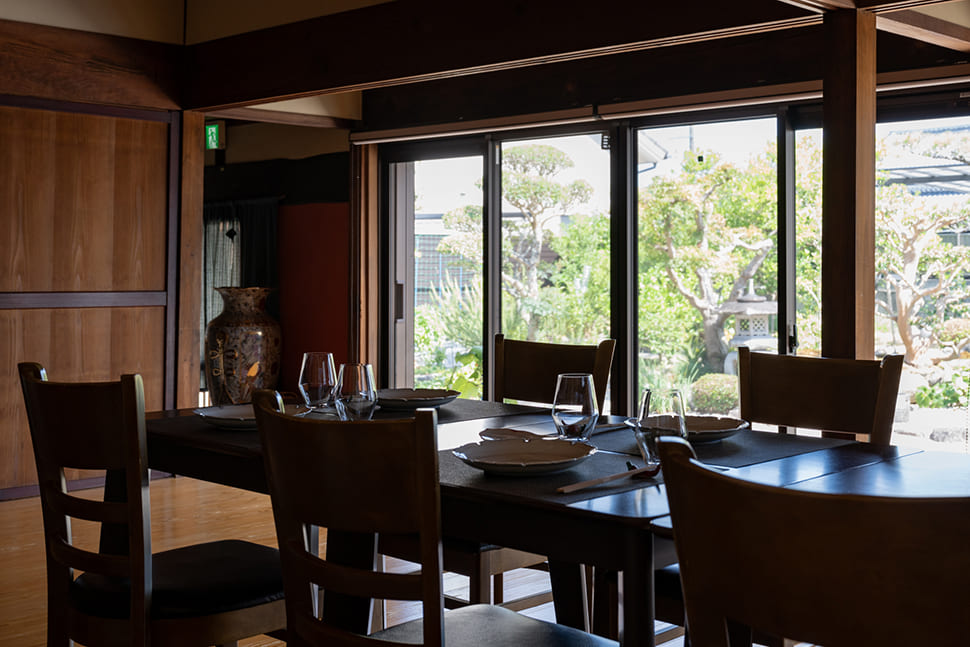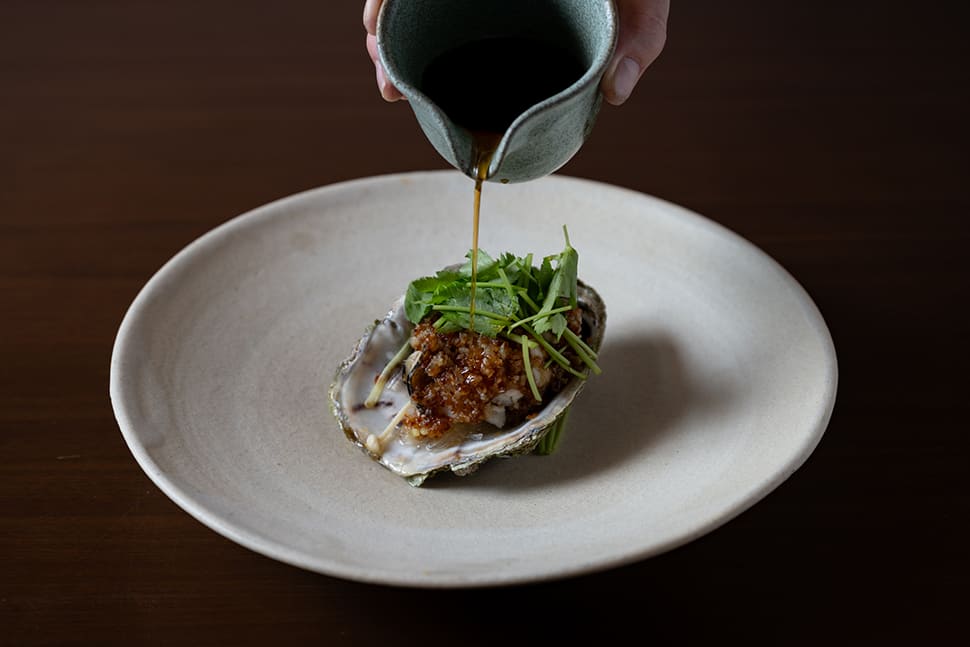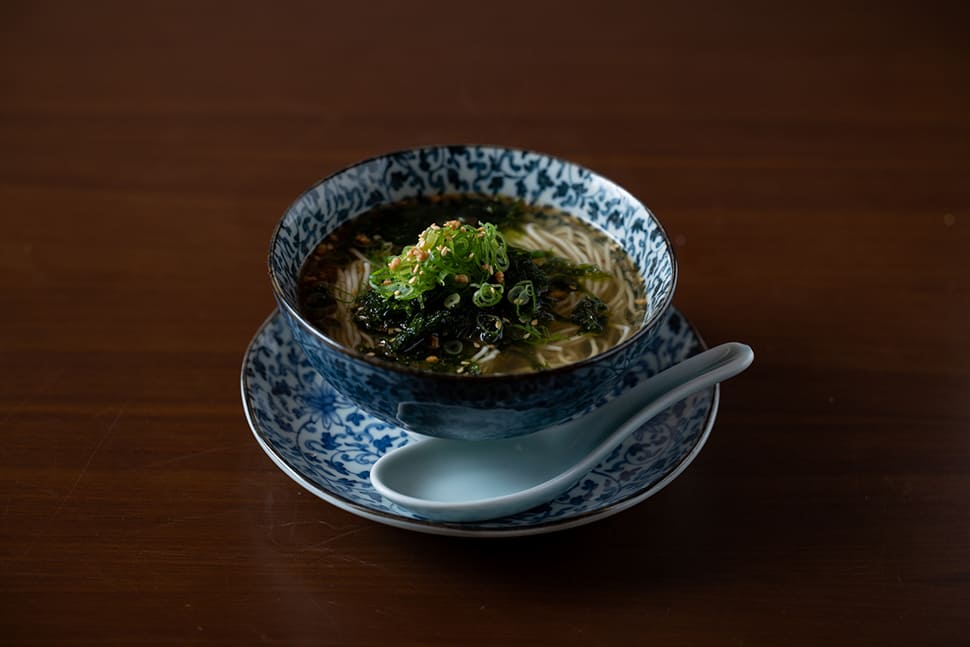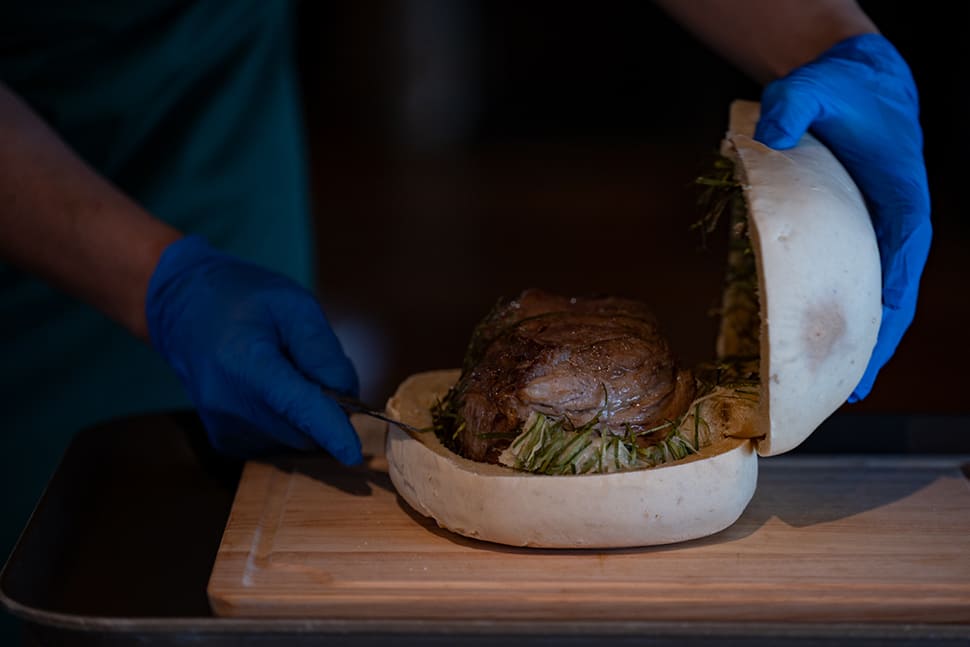DESTINATION RESTAURANTS
May 28, 2024
Shibousai Kitagawa

Matsusaka is a midsize city in Mie Prefecture with a population of about 150,000. From olden times it prospered as a post town for pilgrims en route to Ise Shrine. In the Edo Period, many wealthy merchants rose to prominence here — most notably the Mitsui family, founders of the Mitsui Group, known for its banking, real estate and trading businesses. But for many people today, the city’s name most likely brings to mind Matsusaka beef, the epitome of marbled meat. In addition to cattle farms, the city is dotted with famous restaurants serving sukiyaki and other beef dishes.
Mie abounds in high-quality food products including not only beef, but also premium seafood such as Ise-ebi (spiny lobster) and abalone. This special region is home to Shibousai Kitagawa, a Chinese restaurant that is booked up a year in advance. A 20-minute drive from Matsusaka Station, the restaurant occupies a renovated traditional house that was once a sericulture farm, surrounded by rice fields.
Born in Matsusaka, owner-chef Yoshihiro Kitagawa attended a culinary institute in Osaka. In 1993, when it was standard practice in Chinese cuisine to use umami seasoning to enhance flavors, Kitagawa was stunned by the delicious flavors of the Chinese cuisine created without the use of such flavor enhancers by visiting instructor Yoshinori Kawada, owner-chef of the restaurant Bunrin and master of “nouvelle Chinoise” cuisine. After graduation, Kitagawa trained in several Chinese restaurants before joining the staff of Bunrin, where he gained a deeper knowledge of Kawada’s ideas and techniques.
“Rather than a cuisine of subtraction, the concept is not to use anything superfluous in the first place,” Kitagawa said. “It’s like the idea that tomato or watermelon tastes sweeter when it’s sprinkled with salt — based on that way of thinking, simple dishes are made with a minimum of ingredients and seasonings.”
After honing his skills, he had the idea of going solo in 2014. “At first I thought of opening a restaurant in Tokyo, but I’d become exhausted at the place where I was working at the time,” he said. “Psychologically as well, I felt I couldn’t keep going, so I went back to my parents’ house.”
He then purchased the traditional house that would become his current establishment, and opened a Chinese restaurant in 2015. At first the restaurant offered relatively inexpensive lunches. “After that, I was making dishes without garlic, for people who had to go back to work after lunch,” he said. “That actually became a distinctive feature of my cooking, and the flavors became even purer than before.”
This cuisine steadily drew increased attention, and more guests came from outside the prefecture. Therefore, Kitagawa started consciously incorporating local specialties like Matsusaka beef, Ise-ebi and abalone into his course menu to spread the word about the attractions of Mie. Naturally, with the use of premium ingredients, the course price increased. The restaurant’s operation has changed as well. With the COVID-19 situation as a motivating factor, it began serving just one group per day on a reservation-only basis. Currently, the course menu price starts at ¥33,000 ($220).
In Kitagawa’s cuisine, which brings out the character of the ingredients using a minimum of seasoning, there is a subtly profound emotion that is distinctively Japanese. This feeling is connected to mono no aware, a uniquely Japanese aesthetic sensibility first described by the great Edo-era Japanese classical scholar Motoori Norinaga, a native of Matsusaka. “Mono no aware” is often explained as an awareness and appreciation of all things and their transience.
While based on the cuisines of Sichuan and Guangzhou, the dishes created by Kitagawa constitute a Chinese cuisine that is a Japanese original. It is a cuisine that cannot be experienced even in China — one that exists in this place alone.










1020 Isedera-cho, Matsusaka-shi, Mie Prefecture